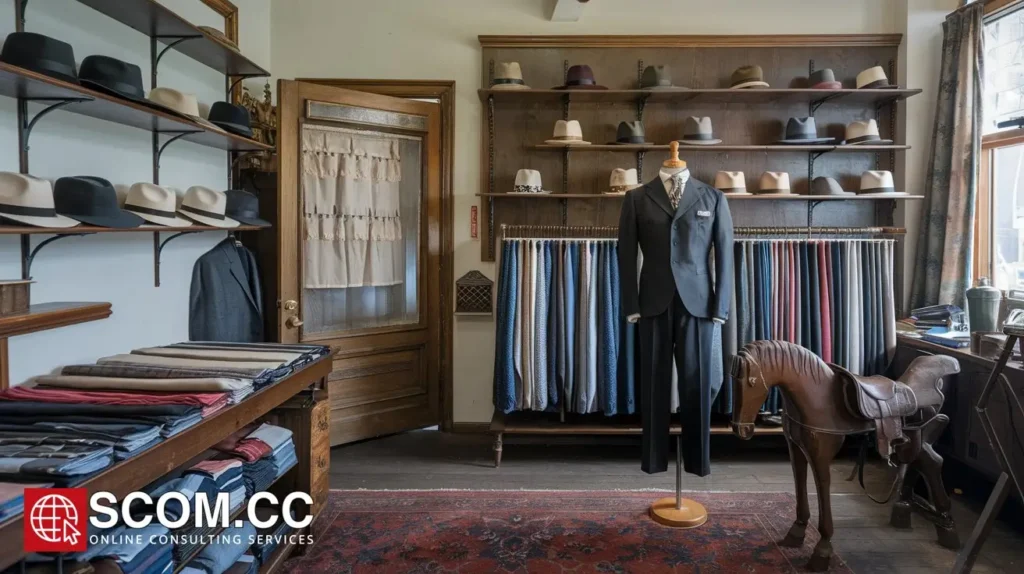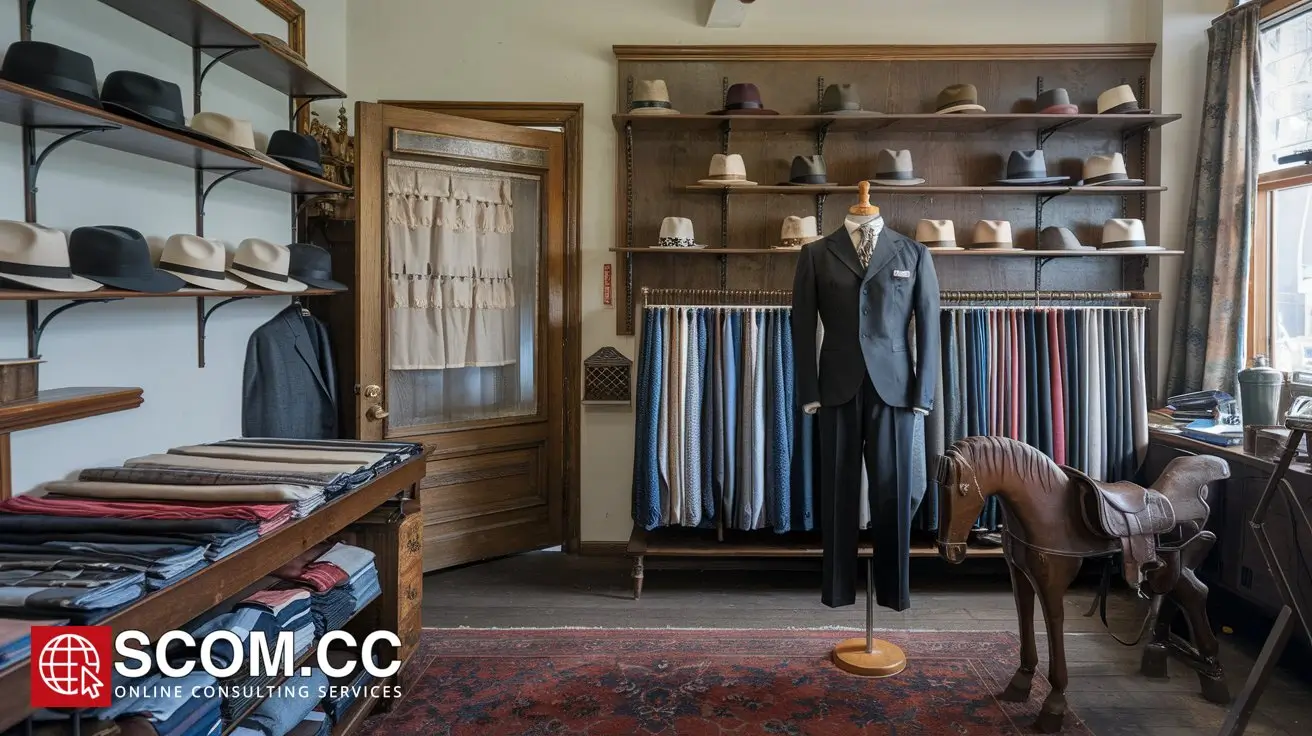What Are the Origins of Classic Tailoring Styles and Patterns?

- What Are the Origins of Classic Tailoring Styles and Patterns?
- The Birth of Bespoke Tailoring: Savile Row and the English Tradition
- Italian Tailoring: The Art of Soft Construction
- French Tailoring: The Epitome of Elegance
- American Tailoring: The Rise of Ready-to-Wear
- Scottish Tailoring: The Heritage of Tartan and Tweed
- Conclusion: The Enduring Legacy of Classic Tailoring
-
FAQ
- What is the significance of Savile Row in tailoring?
- How does Italian tailoring differ from English tailoring?
- What innovations did Coco Chanel bring to tailoring?
- Why is the sack suit significant in American tailoring?
- What are the key features of French tailoring?
- What role does tartan play in Scottish tailoring?
- How has Harris Tweed influenced tailoring?
What Are the Origins of Classic Tailoring Styles and Patterns?
Introduction to Classic Tailoring Styles and Patterns
Classic tailoring styles and patterns are the foundation of modern fashion, representing a blend of craftsmanship, tradition, and innovation. These timeless designs have roots in various historical periods and cultural movements, shaping the sartorial choices we recognize today. This article explores the origins of these iconic styles and patterns, tracing their evolution from their beginnings to their current forms.
The Birth of Bespoke Tailoring: Savile Row and the English Tradition
Savile Row: The Epicenter of Tailoring Excellence
The history of classic tailoring is closely intertwined with Savile Row, the renowned street in London that became the epicenter of bespoke tailoring in the 19th century. Established tailors such as Henry Poole and Huntsman perfected the art of creating custom garments, emphasizing precise fit, superior craftsmanship, and luxurious fabrics.
Origins of the Suit: Savile Row tailors are credited with creating the modern three-piece suit. This style, consisting of a jacket, waistcoat, and trousers, became the hallmark of English tailoring. The suit's structured design, characterized by a narrow waist and broad shoulders, was intended to enhance the wearer’s physique, setting the standard for formal menswear.
Patterns and Techniques
The classic patterns of Savile Row tailoring were based on the bespoke method, where each garment was made from scratch, using a unique pattern created for the individual client. The tailcoat, morning coat, and dinner jacket are all products of this tradition, each designed for specific social occasions.
Hand-stitched Details: A key feature of classic tailoring from Savile Row is the emphasis on hand-stitched details, such as buttonholes, pockets, and lapels. These elements add both functionality and a personalized touch, reflecting the tailor’s skill and attention to detail.
Italian Tailoring: The Art of Soft Construction
Neapolitan Tailoring: A Relaxed Approach
In contrast to the structured English suit, Italian tailoring—particularly from Naples—emphasizes a softer, more relaxed construction. This style is known for its lightweight fabrics and unstructured designs, which allow for greater ease of movement and comfort.
The Neapolitan Jacket: One of the most iconic pieces of Italian tailoring is the Neapolitan jacket, characterized by its unlined construction, soft shoulders, and minimal padding. The jacket’s lack of structure gives it a more casual, laid-back appearance, making it a versatile option for both formal and informal occasions.
Patterns and Influence
Italian tailors often use lighter, more breathable fabrics such as linen, cotton, and silk. The patterns are typically clean and understated, with a focus on silhouette and proportion rather than intricate detailing. This approach reflects the Italian emphasis on effortless elegance and simplicity.
Tailoring Schools: The cities of Milan, Rome, and Florence each have their own tailoring schools, contributing to the diversity of Italian styles. While Milanese tailoring tends to be more structured, Roman tailoring emphasizes sharp lines, and Florentine tailoring balances tradition with modernity.
French Tailoring: The Epitome of Elegance
Parisian Couture: Tailoring Meets Fashion
French tailoring is renowned for its fusion of couture and tailoring, where craftsmanship meets high fashion. Paris has been a global fashion capital for centuries, and its tailors have played a crucial role in shaping the aesthetic of formal wear.
Chanel and Dior: Designers like Coco Chanel and Christian Dior revolutionized women’s tailoring by introducing styles that emphasized femininity and elegance. Chanel’s boxy tweed jackets and Dior’s Bar suit became symbols of French sophistication and precision tailoring.
Patterns and Innovations
French tailoring is known for its structured lines and bold patterns. Pinstripes, houndstooth, and tartan patterns are often used to add visual interest to tailored garments. The French approach to tailoring emphasizes proportion and balance, ensuring that each garment flatters the wearer’s form.
Hand-Finishing Techniques: French tailors are also celebrated for their hand-finishing techniques, such as intricate embroidery, appliqué, and beading. These details add a touch of luxury and uniqueness to each piece, distinguishing French tailoring from other traditions.
American Tailoring: The Rise of Ready-to-Wear
Ivy League Style and the Brooks Brothers Legacy
American tailoring has its roots in the Ivy League style, which emerged in the early 20th century. This style was popularized by brands like Brooks Brothers and J. Press, who introduced the sack suit—a more relaxed and less structured version of the traditional English suit.
Characteristics of the Sack Suit: The American sack suit is defined by its boxy cut, natural shoulders, and straight lines. Unlike its European counterparts, the sack suit does not emphasize the waist, offering a more comfortable and casual fit.
Patterns and Mass Production
American tailoring also pioneered the ready-to-wear movement, making tailored clothing more accessible to the masses. This shift led to the standardization of patterns and sizes, allowing garments to be produced on a large scale.
Casual Tailoring: The American approach to tailoring often incorporates more casual elements, such as button-down collars, patch pockets, and looser fits. Fabrics like denim and chino cloth became staples of American tailoring, reflecting the country’s emphasis on practicality and durability.
Scottish Tailoring: The Heritage of Tartan and Tweed
The Highland Influence
Scottish tailoring is deeply rooted in the country’s Highland traditions, with tartan and tweed being the most iconic fabrics. These materials were originally used for kilts and outerwear, designed to withstand the harsh Scottish climate.
Tartan Patterns: Tartan, with its distinctive checkered patterns, has a long history in Scotland, where it was traditionally associated with specific clans. Tailors incorporated tartan into tailored garments, making it a symbol of Scottish heritage and identity.
Tweed: The Fabric of the Countryside
Tweed is another key element of Scottish tailoring, known for its durability and textured weave. Originally used for hunting jackets and outdoor attire, tweed became a popular fabric for blazers, suits, and coats. Its rugged appearance and ability to repel water made it ideal for country pursuits.
The Harris Tweed Tradition: One of the most famous types of tweed is Harris Tweed, handwoven by islanders in the Outer Hebrides. This fabric is celebrated for its quality and authenticity, making it a favorite among tailors and fashion enthusiasts alike.
Conclusion: The Enduring Legacy of Classic Tailoring
The origins of classic tailoring styles and patterns are steeped in history, tradition, and regional influences. From the structured suits of Savile Row to the relaxed elegance of Italian tailoring, these styles have evolved over time while maintaining their timeless appeal. Today, classic tailoring continues to inspire and shape contemporary fashion, proving that good style is truly eternal.
Summary of Classic Tailoring Styles and Patterns
| Region/Style | Key Characteristics | Notable Tailors/Influence | Signature Patterns/Materials |
|---|---|---|---|
| Savile Row (English) | Structured suits, precise fit, luxurious fabrics | Henry Poole, Huntsman | Tailcoat, Morning Coat, Dinner Jacket, bespoke patterns |
| Neapolitan (Italian) | Soft construction, unstructured jackets, relaxed silhouettes | Neapolitan tailoring houses | Lightweight fabrics (linen, cotton), minimal padding |
| French | Structured lines, elegance, high fashion | Coco Chanel, Christian Dior | Pinstripes, Houndstooth, Tartan, couture detailing |
| American | Ivy League style, casual tailoring, mass-produced ready-to-wear | Brooks Brothers, J. Press | Sack Suit, denim, chino cloth |
| Scottish | Heritage fabrics, durability, outdoor wear | Harris Tweed tradition, Highland influences | Tartan, Tweed (e.g., Harris Tweed) |
FAQ
What is the significance of Savile Row in tailoring?
FAQ: Savile Row in London is the birthplace of bespoke tailoring, known for its precise fit and superior craftsmanship. It is the origin of the modern three-piece suit and remains a symbol of tailoring excellence.
How does Italian tailoring differ from English tailoring?
FAQ: Italian tailoring, particularly from Naples, is known for its soft construction and unstructured design, focusing on comfort and movement. English tailoring, epitomized by Savile Row, emphasizes a structured, precise fit with luxurious fabrics.
What innovations did Coco Chanel bring to tailoring?
FAQ: Coco Chanel revolutionized women’s tailoring by introducing the little black dress, the Chanel suit, and the boucle jacket, emphasizing elegance, simplicity, and functionality in her designs.
Why is the sack suit significant in American tailoring?
FAQ: The sack suit, popularized by American brands like Brooks Brothers, is characterized by its boxy cut and natural shoulders. It represents a more relaxed and casual approach to tailoring compared to European styles.
What are the key features of French tailoring?
FAQ: French tailoring is known for its structured lines, bold patterns like pinstripes and houndstooth, and the integration of couture craftsmanship with tailoring, as seen in the designs of Chanel and Dior.
What role does tartan play in Scottish tailoring?
FAQ: Tartan is a key element of Scottish tailoring, originally associated with specific clans. It has become a symbol of Scottish heritage and is used in various tailored garments, including kilts and jackets.
How has Harris Tweed influenced tailoring?
FAQ: Harris Tweed, a handwoven fabric from Scotland’s Outer Hebrides, is celebrated for its durability and authenticity. It has become a staple in tailored outerwear, known for its rugged appearance and water-repellent qualities.

To explore more about tailoring, visit our Blog of Tailoring. If you have any questions or need assistance, go to our contact page. Additionally, you can find more information about tailoring and consulting at this tailoring and consulting portal.

Leave a Reply